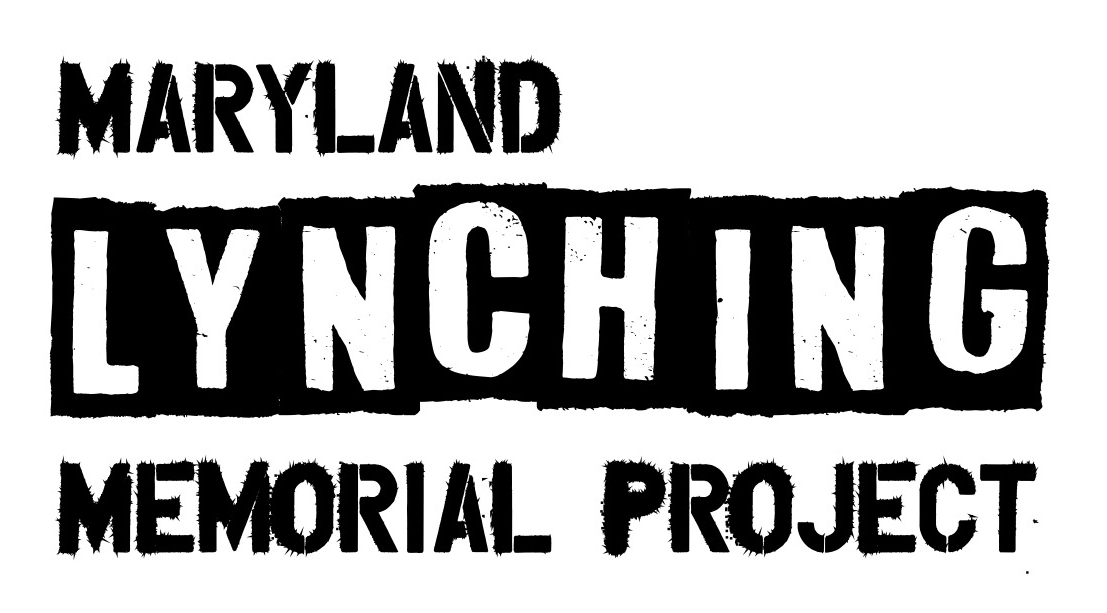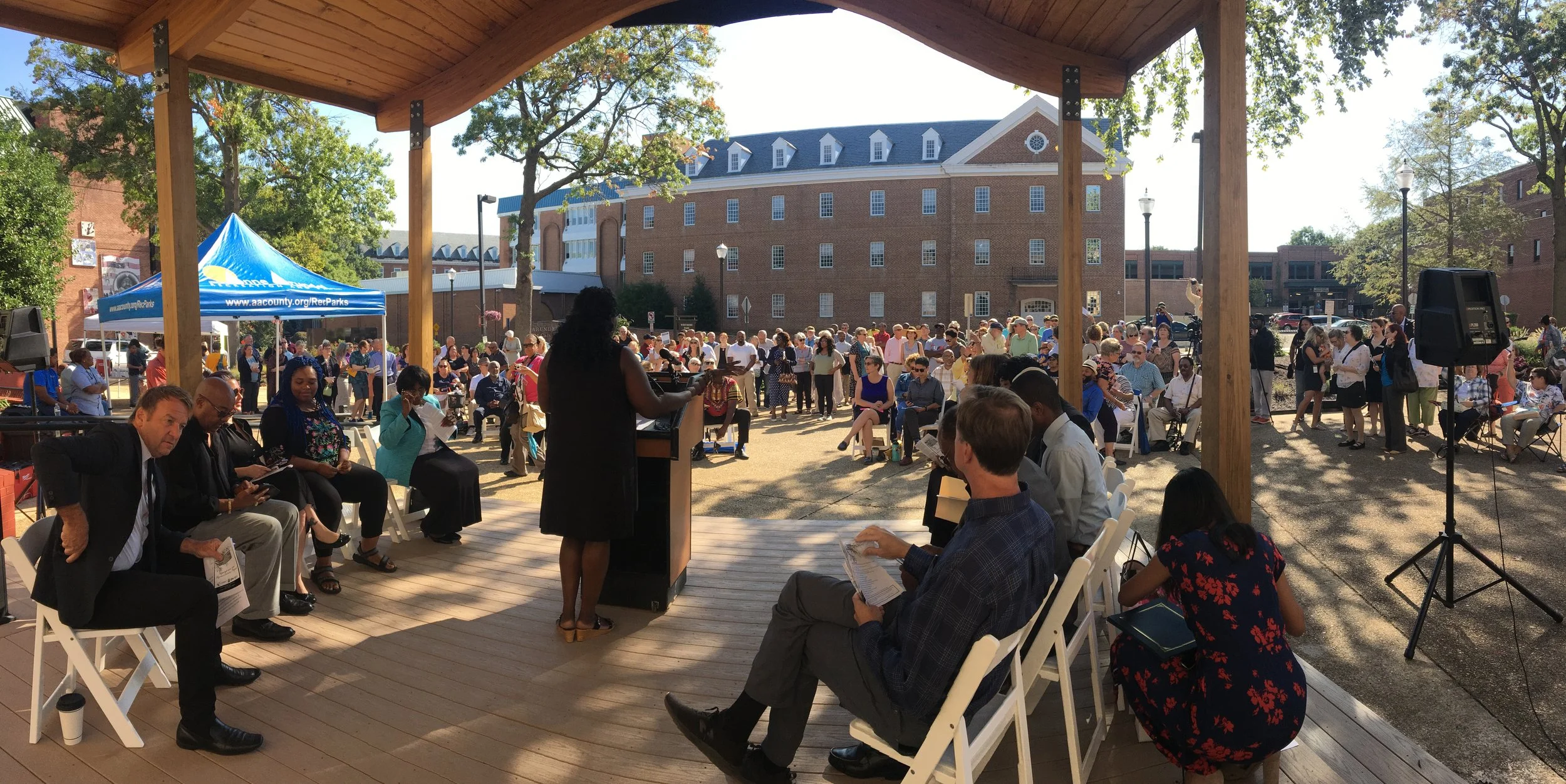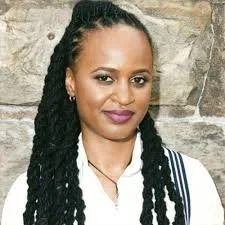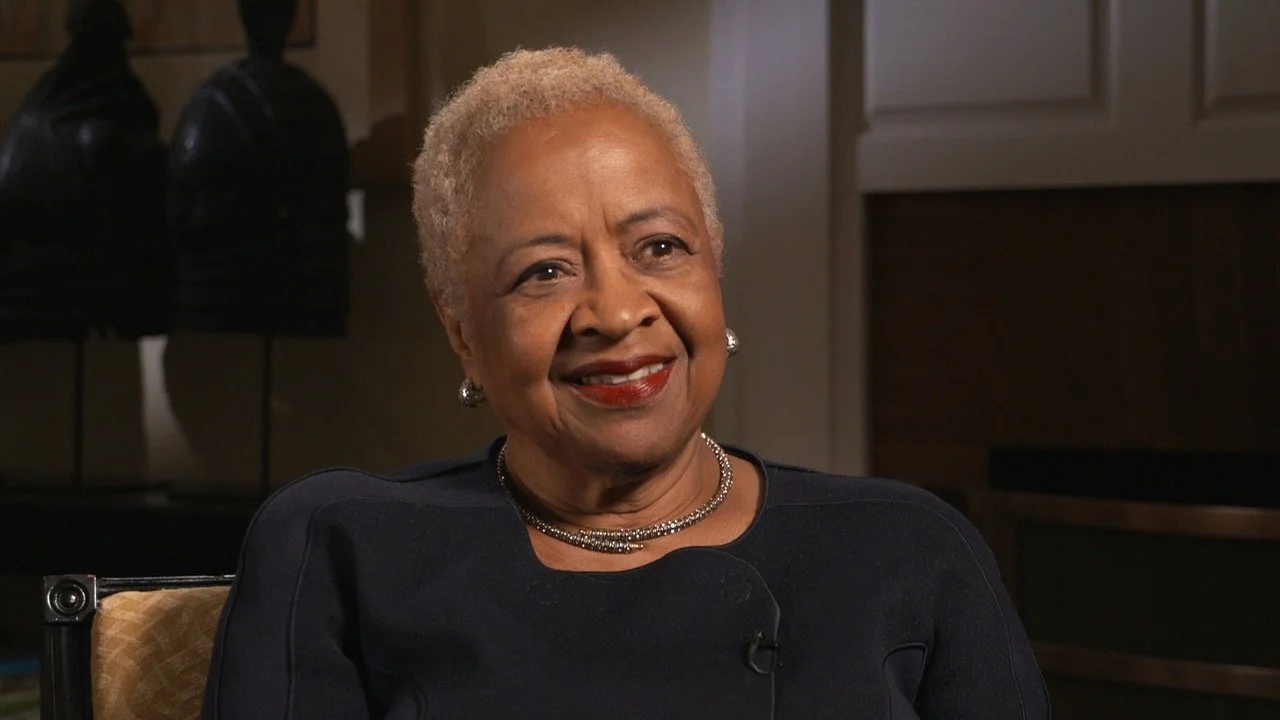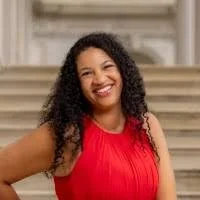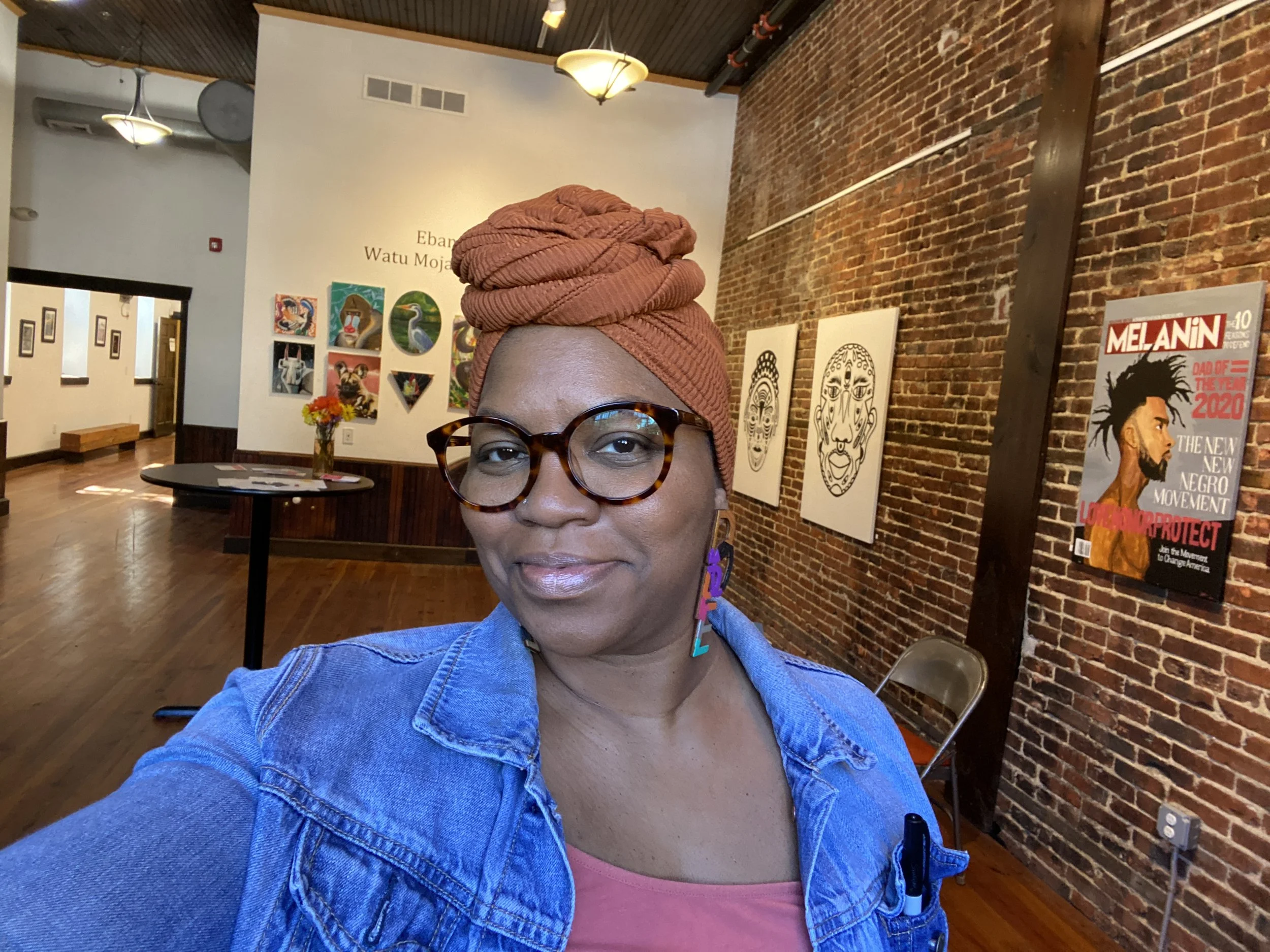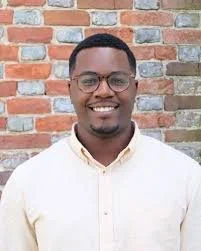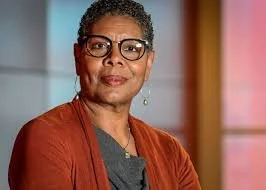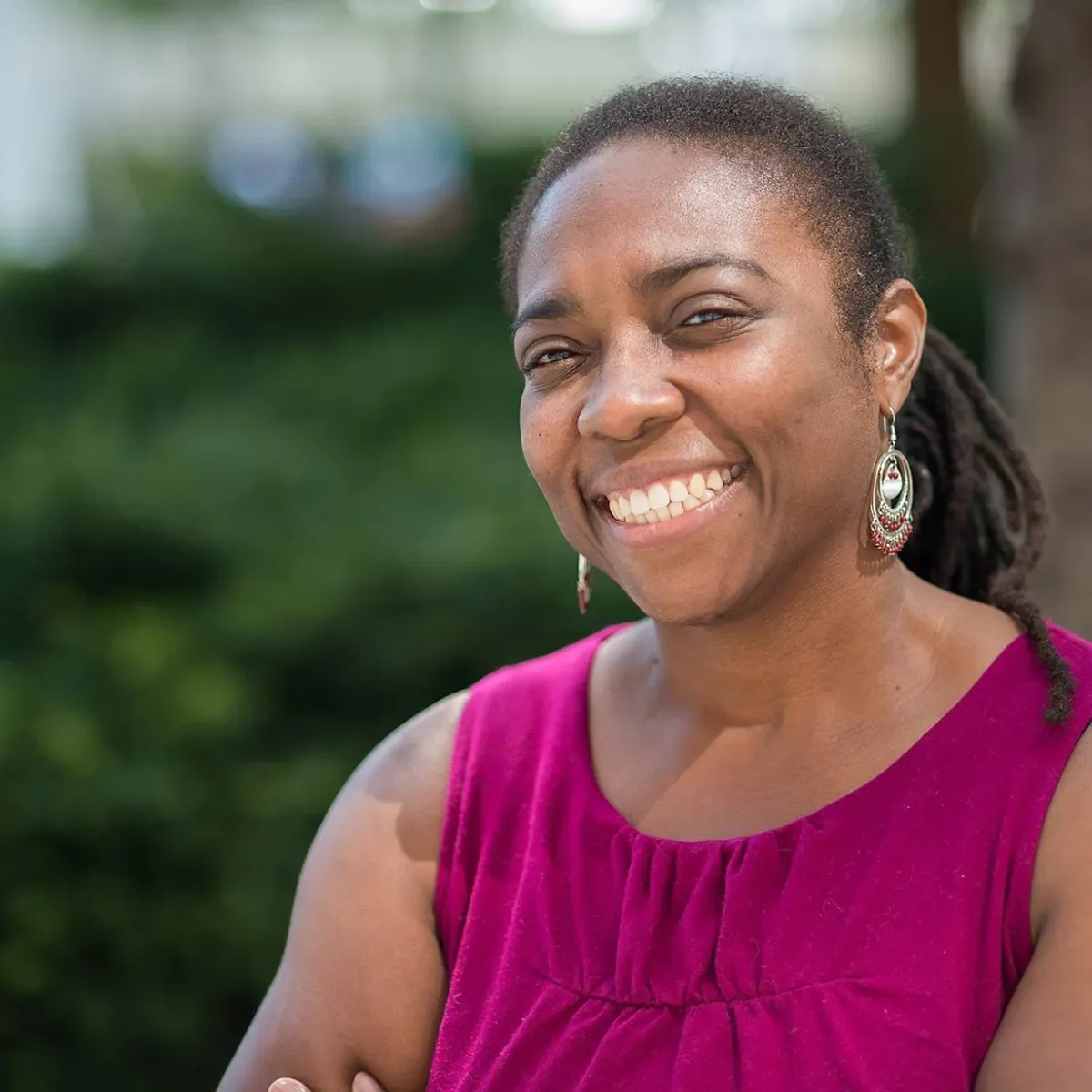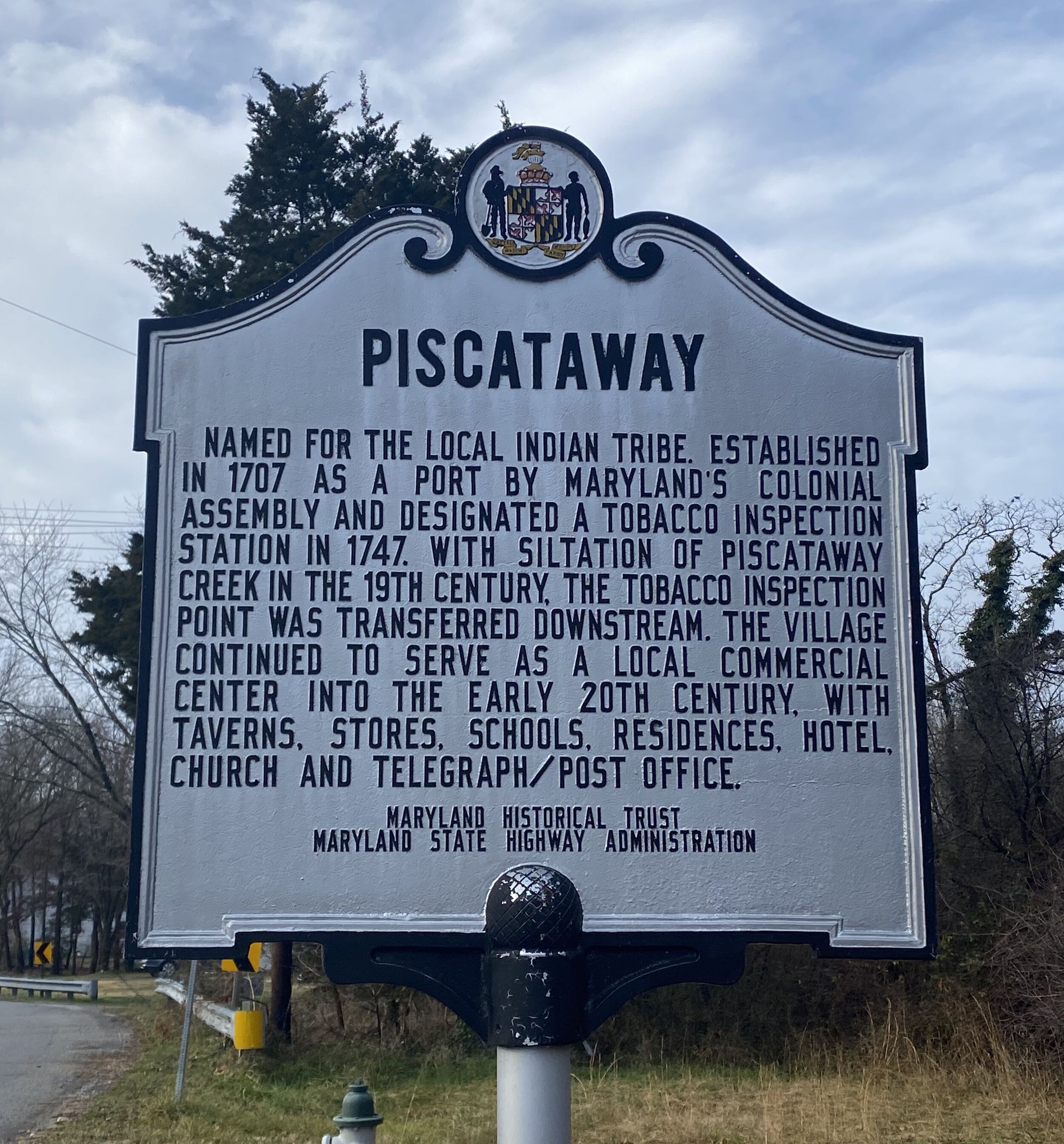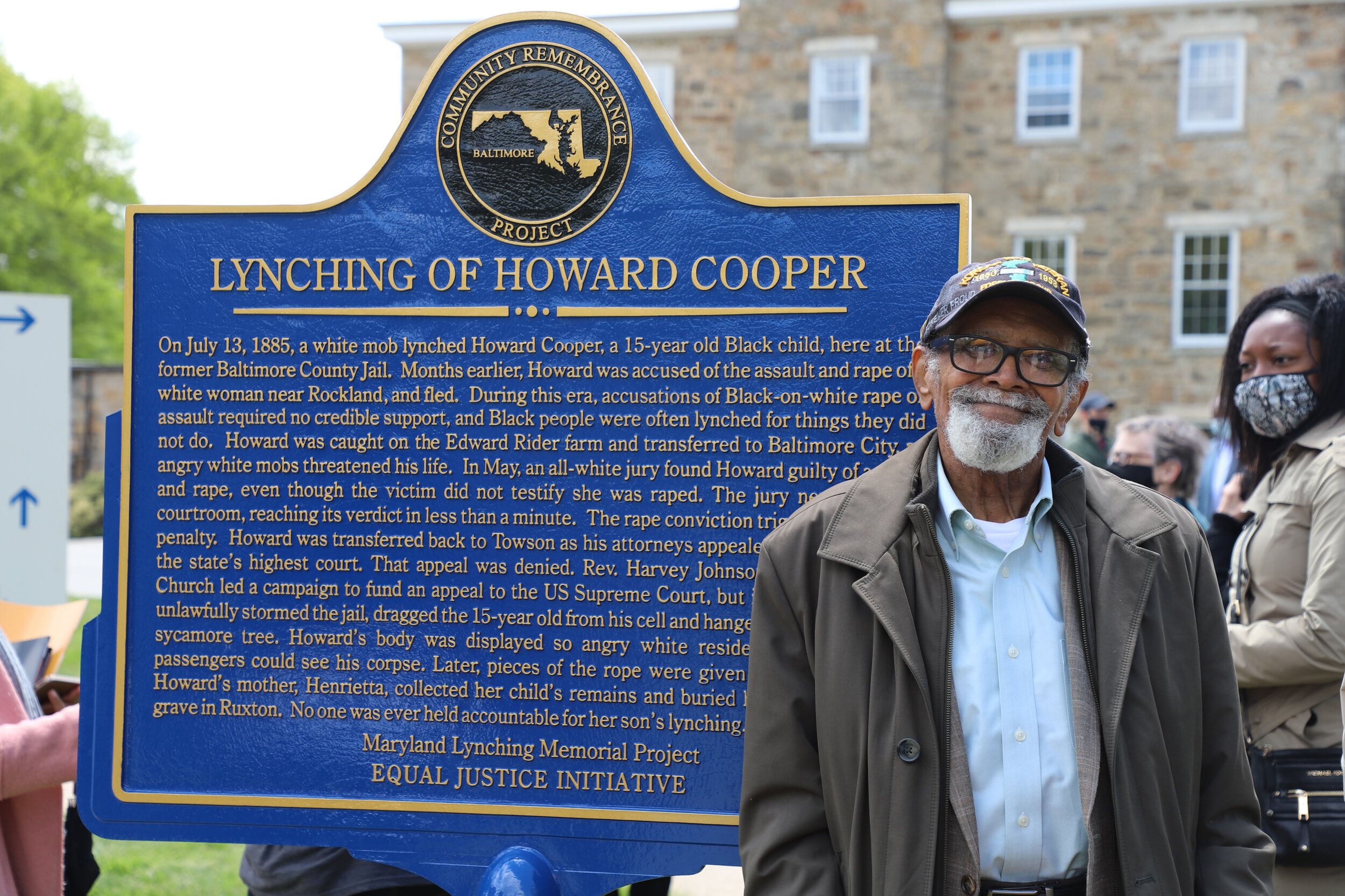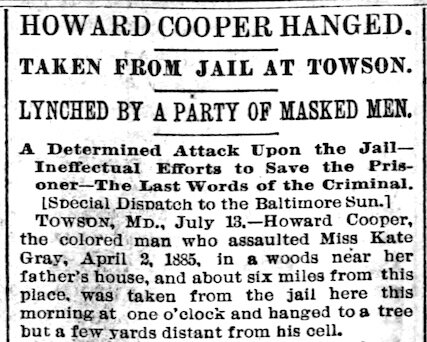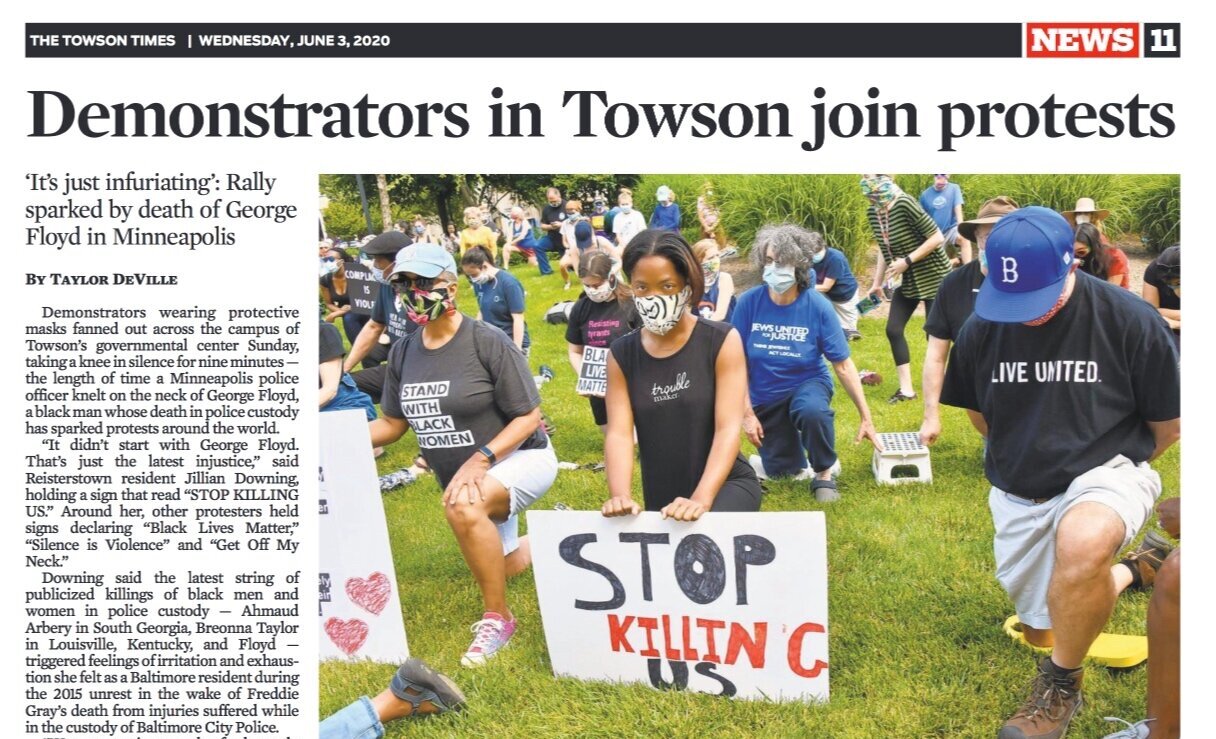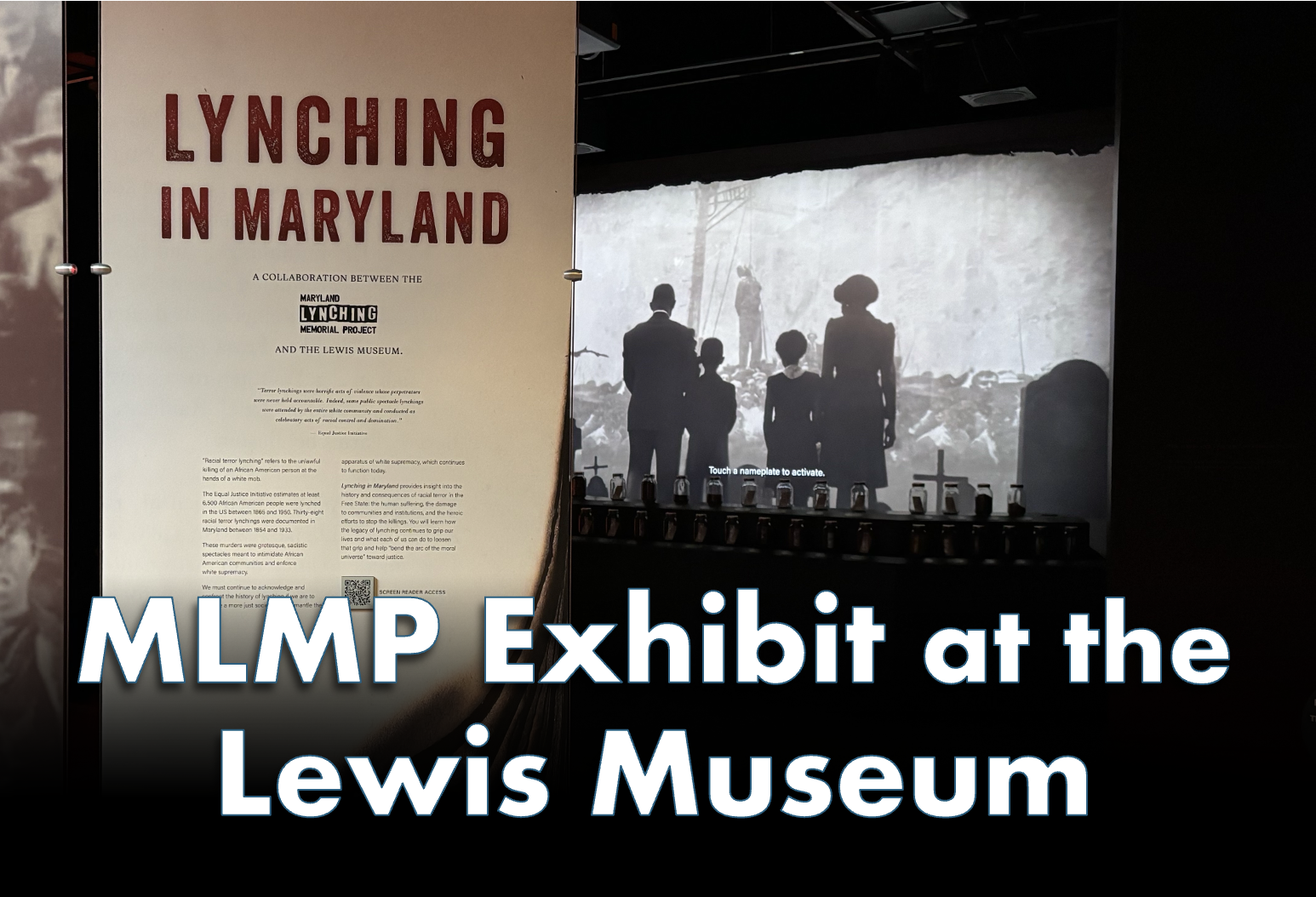“We cannot heal the deep wounds inflicted during the era of racial terrorism until we tell the truth about it.”
Maryland Lynching Memorial Project and the Baltimore Symphony Orchestra Announce Artistic Collaboration
The Maryland Lynching Memorial Project and the Baltimore Symphony Orchestra (BSO) announce an artistic collaboration to support the future unveiling of Maryland’s first permanent memorial to victims of racial terror lynching, slated for 2027.
This partnership represents the next phase of a multi‑year effort that began in 2022, when the Reginald F. Lewis Museum and MLMP jointly announced a federally funded initiative to create both a permanent exhibit and a memorial honoring Maryland’s known and unknown lynching victims. The exhibit, Lynching in Maryland, opened in October 2024. Although the original Federal funding source for the memorial is no longer available, MLMP remains committed to the project and is planning an open competition for its design, aided by an ad hoc committee of leading Maryland artists, scholars and arts administrators.
At MLMP’s Annual Conference, the organization shared a public update on the memorial’s progress, including remarks by BSO Music Director Jonathon Heyward, who spoke about the orchestra’s collaboration and the role of music in supporting remembrance and reconciliation.
As part of this partnership, the BSO will collaborate with MLMP to commission and premiere a new chamber work to accompany the memorial’s dedication. The piece will explore themes of loss, resilience, and remembrance, offering an artistic response to the memorial’s purpose and narrative.
“America’s history of racial terror has been dismissed for far too long,” said Will Schwarz, Founder and past President of the MLMP. “We believe music has the unique power to make this dark legacy accessible to audiences in an emotional way that can be a vehicle for the reckoning we seek.”
“Music has the power to resonate, reflect thought, invoke feeling, and challenge perceptions where words cannot,” said Jonathon Heyward, Music Director of the BSO. “We are honored to collaborate with MLMP as they build this long‑awaited memorial, supporting communities as they confront painful truths and imagine a more just future.”
“This project continues years of community‑based research, documentation, and public education,” said Amy Millin, President of the MLMP. “The memorial—and the artistic work that will accompany it—will offer space for reflection, learning, and connection. It is a collective step toward a more honest and inclusive historical record for Maryland.”
The memorial’s final design and site details will be announced at a later stage as MLMP advances its next phase of work with partners, designers, and community stakeholders.
Meet the “Lynching in Maryland” Conference Speakers
The Maryland Lynching Memorial Project presents the 8th annual “Lynching in Maryland” conference on October 25, 2025 from 9:00 am to 4:30 pm at the Reginald F. Lewis Museum of Maryland African American History & Culture in downtown Baltimore (doors open at 8:30 am).
This conference is open to the public and of particular interest to members of Maryland communities; to local and state leaders; and to advocates, educators, students, researchers, policymakers, and journalists in and outside of Maryland.
Program details and speaker bios may be found on the Conference Information and Registration page.
8th Annual Conference Program Update
Famed civil and human rights attorney and former judge, Margaret Burnham, is the founder and director of the Civil Rights and Restorative Justice (CRRJ) Project at Northeastern University School of Law. Judge Burnham was nominated by President Joe Biden to serve on the Civil Rights Cold Case Records Review Board and in 2022 published the acclaimed volume, By Hands Now Known: Jim Crow’s Legal Executioners. Civil rights icon Angela Davis said the book “needs to be read by everyone who recognizes the historic mandate of our time: to interrupt cycles of racist violence that are rooted in slavey and have repeatedly found new modes of expression, even as the unresolved old forms plague our historical memory.”
Professor Burnham’s talk, Racial Pasts, Perilous Futures, will consider how historic and contemporary forms of racial violence create a difficult and complex landscape for memorialization efforts. She will discuss how we can best leverage narratives that have been uncovered in the last quarter century to redefine what justice requires today as we confront novel and recycled forms of racism. Judge Burnham will argue that historical accuracy requires us to “confront the violence of organized forgetting” if we are to achieve intergenerational justice.
Copies of Professor Burnham's book, By Hands Now Known, will be available for purchase and signing at the conference.
Visit the Conference Information and Registration site to learn more about the 8th Annual "Lynching in Maryland" Conference, on Saturday, October 25, 2025, at the Reginald F. Lewis Museum of Maryland African American History & Culture in Baltimore.
8th Annual "Lynching in Maryland" Conference
We are pleased to announce that the 8th Annual MLMP "Lynching in Maryland" Conference registration is open.
The Maryland Lynching Memorial Project (MLMP) will hold its 8th Annual "Lynching in Maryland" Conference on Saturday, October 25, 2025 at the Reginald F. Lewis Museum of Maryland African American History & Culture in Baltimore.
As in years past, the program will include a variety of exciting and thought-provoking presentations, panel discussions and films that consider the history of racial terror lynching in Maryland, its lasting effects, and efforts around the state to confront the truth so that healing and reconciliation might begin.
Program details may be found on the Conference Information and Registration page.
The Maryland Lynching Memorial Project is committed to providing accessible, low-cost educational and community experiences for conference attendees. Your contribution will directly support conference programming. Thank you for your support.
Virtual Film Series & Discussion: My Father’s Name on September 18
Registration is open for the September 18th, 7:00pm EST, virtual screening and panel discussion of My Father's Name. My Father's Name was previously screened at the 2024 MLMP Annual Conference. Following the 2024 showing, MLMP received numerous requests to host a second screening of this award-winning film by producer and director Susanna Styron.
The 20-minute short documentary shares a family story. Years after Lee Ed Frazier's death, his daughter Jan Frazier made a shocking discovery: as a young man her father had participated in a lynching. Now, as she attempts to uncover the truth about what happened, Jan must reckon with deeply conflicted feelings about the father she loved, grapple with how to hold her family accountable, and face the dawning awareness of her own unconscious racism. The online screening of the 20-minute film will be immediately followed by a conversation with special guests, including:
Jan Frazier, the movie's narrator, who made the shocking discovery about her father, and learns about the important connections of this event in American history.
Dr. Terry Anne Scott is an award-winning historian, author, and speaker. She is the Director of the Institute for Common Power, an Associate Editor for the Journal of Sports History, and a member of the Editorial Staff for the Journal of American History. Terry serves on the board of directors of the MLMP.
Amy S. Millin is the is the President of the MLMP. She serves as a Commissioner on the Maryland Lynching Truth & Reconciliation Commission and is adjunct in the MA in Cultural Sustainability and MA in Historic Preservation programs at Goucher College.
Register HERE for the September 18th Racial Justice Virtual Film & Discussion, a free, online MLMP program.
Virtual Film Screening & Discussion: The Barber of Little Rock on April 16
The Maryland Lynching Memorial Project in partnership with the Institute for Common Power is excited to announce the virtual screening of The Barber of Little Rock on April 16th at 7:00pm. Film directors John Hoffman and Christine Turner follow Arlo Washington, a local barber, as he helps members of his community escape the hazards of banking while Black. This 2024 Oscar-nominated documentary/short asks us to consider the roles that history, institutions, racism, trust, and ingenuity have on communities and their residents.
Free community event, register HERE.
The online screening of the 35-minute film will be followed by a conversation with special guests including:
Arlo Washington, the star of the film, had been a barber for about 10 years when he founded People Trust, a literacy non-profit in 2008, the same year he opened the for-profit, Washington Barber College.
John Hoffman, a six-time Emmy award-winning filmmaker who spent time with Discovery and HBO.
Dr. Terry Anne Scott is an award-winning historian, author, and speaker. She is the Director of the Institute for Common Power and serves on the board of directors of the MLMP.
Amy S. Millin is the is the President of the MLMP and serves as a Commissioner on the Maryland Lynching Truth & Reconciliation Commission.
While admission to the screening is free, REGISTRATION IS REQUIRED TO ATTEND. We invite you to consider a donation to support important and meaningful programming.
Founder’s Day: March 12
February 2018 Soil Collection for Howard Cooper, Baltimore County (one month prior to MLMP's founding).
Today is the Maryland Lynching Memorial Project’s 7th anniversary. On this day in 2018 the Maryland Lynching Memorial Project was founded by individuals who set out to expose our state's history and begin the work towards reconciliation. Over the ensuing years, countless individuals have become involved in a variety of efforts, including founding County Coalitions, conducting research, building the MLMP Digital Archives, partnering on the the Lynching Maryland exhibit (Lewis Museum), supporting the Maryland Lynching Truth & Reconciliation Commission, and so much more.
On this day, the MLMP extends appreciation to you for your support.
Truth first.
Lynching in Maryland opens at the Lewis Museum
On October 30, 2024 about 200 guests gathered at the Lewis Museum to celebrate an historic occasion: the opening of the permanent Lynching in Maryland exhibit, a collaboration between the Maryland Lynching Memorial Project and the Lewis Museum.
The opening of Lynching in Maryland is the culmination of a campaign initiated by MLMP in 2020 to establish a partnership with the Lewis Museum to create a permanent exhibit on the history of lynching in Maryland and build a memorial for all known and unknown lynching victims in the state.
In 2022, the Lewis Museum was able to secure Federal funding for the project through the auspices of Maryland’s US Senator Chris Van Hollen. Early in 2023, Quatrefoil Associates of Columbia, MD was selected to design and build the exhibit. Quatrefoil worked closely with the Lewis Museum and MLMP over the 1-1/2 years to create a meaningful and powerful display.
One of the features of the exhibit is an array of jars filled with soil collected from lynching sites all over Maryland by the many county coalitions affiliated with MLMP. Touching the nameplate in front of any jar activates the projection of a brief biography of that victim over an atmospheric and evocative video that plays in the background.
Lynching in Maryland provides insight into the history and consequences of racial terror in the state, and also demonstrates how the legacy of lynching continues to be manifest in our lives. It invites visitors to find ways to help “bend the arc of the moral universe” toward justice.
7th Annual “Lynching in Maryland” Conference
video now streaming
The MD Lynching Memorial Project (MLMP) held its 7th Annual “Lynching in Maryland” Conference on Saturday, November 2, 2024 at the Reginald F. Lewis Museum of Maryland African American History and Culture in Baltimore.
Highlights of the conference included the Maryland premiere of the award-winning documentary, My Father's Name.
This 20-minute film traces a woman's harrowing and life-altering realization that her father had taken part in one of the nation's most notorious acts of racial terror: the torture and brutal lynching of Roosevelt Townes and Robert McDaniels in Duck Hill, Mississippi.
A panel discussion following the film included
Susanna Styron, the film’s director, is an award-winning writer and director of both documentary and dramatic works for film and television
Devontae Freeland, descendant of James Bowens who was lynched in Frederick in 1895
Juliet Hinely, great-great-granddaughter of the man who led the mob that lynched 15-year-old Howard Cooper in Towson in 1885
The discussion was moderated by Dr. Terry Anne Scott, author of the acclaimed "Lynching and Leisure: Race and the Transformation of Mob Violence in Texas," and an MLMP board member.
branden jacob-jenkins and stevie wilkins-webb
(photo: adeDANa ASHEBIR)
Additionally, we were honored to welcome 2024 Tony Award-winning playwright Branden Jacobs-Jenkins, who wrote “Appropriate”, winner of three Tonys including “Best Revival”. The play
“Appropriate” tells the story of a reunion of the Lafayette family (a “vortex of dysfunction” according to The Guardian) at its decaying Arkansas plantation home. Three siblings, each with their own agendas, have gathered to clean out the house and divide the estate following the death of the family patriarch, a retired judge. However, while going through his belongings, the family discovers a scrapbook of photographs of lynchings and other gruesome artifacts of those murders. The discovery sets off an avalanche of emotion.
Click on any thumbnail to view video
Joining Jacobs-Jenkins in conversation was Stevie Walker-Webb, Artistic Director at Baltimore’s Center Stage and an Obie Award-winner for directing “Ain’t No Mo’”.
Multidisciplinary artist Ken Gonzales-Day discussed his ground-breaking work featuring his “Erased Lynching” project in which he takes iconic lynching photographs and removes the victim so attention is focused on the perpetrators of these murders.
MLTRC adds more sessions to public hearing slate
April 13, 2024 - MLTRC public hearing in Frederick
In 2019, the Maryland General Assembly enacted, and Governor Larry Hogan signed into law, legislation establishing the Maryland Lynching Truth and Reconciliation Commission (MLTRC). It was the first Commission dedicated to investigating racial terror lynchings in the United States.
The Commission is tasked with researching cases of lynching, holding public hearings in communities where racial terror lynchings took place and developing recommendations for addressing the legacy of lynching that are rooted in restorative justice.
Remaining public hearings are scheduled, as follows:
Hearing Date
County
Victims
December 7, 2024
Caroline County
Kent County
Queen Anne’s County
David Thomas (1854) Denton
Jim Wilson (1862) Oakland
James Taylor (1892) Chestertown
John Fields (1863) Queenstown
January 11, 2025
Howard County
Jacob Henson, Jr. (1895) Ellicott City
January 25, 2025
Prince George’s County
Thomas Juricks (1869) Piscataway
John Henry Scott (1875) Notley Hall
Mike Green (1878) Upper Marlboro
Stephen Williams (1894) Upper Marlboro
February 1, 2025
Carroll County
Townsend Cook (1885) Westminster
Date and site TBA
Institutional and Reconciliation Hearing
All hearings, except for the Institutional/Reconciliation session, will take place on Saturdays from 10a to 2p. Hearing sites have not yet been determined but will be published here when announced
The MLTRC's hearings allow members of the public, including the descendants of victims, witnesses, and perpetrators, the opportunity to offer testimony about how these murders have impacted their lives. They are also a chance for communities to make recommendations for achieving racial healing. Finally, the hearings provide an opportunity to identify and bring to light possible cases of racial terror lynching that are remembered in families and communities but for which there is little or no documentation.
More information on the hearings and on the MLTRC can be found at its website.
2023 “Lynching in Maryland” Conference Now Streaming
The 6th Annual Maryland Lynching Memorial Project “Lynching in Maryland” Conference was held at Goucher College on Saturday, October 14, 2023. A complete recording of the livestream broadcast is now on line and can be accessed with the link to the right.
Among those appearing was Clint Smith, a staff writer at "The Atlantic" and the author of the #1 NY Times bestseller, How the Word Is Passed: A Reckoning With the History of Slavery Across America,
The program agenda, and the time of the recording at which each element begins, is provided on the right, below the link. To locate any item of interest, simply click the red button link and scroll to the corresponding time code.
The” Lynching Bee”: Coming to Terms
by Mike Dixon
Mike Dixon is an historian and writer whose research and teaching focus on social history and community studies. Mike’s research revealed the previously undocumented 1861 lynching of 13-year-old Frederick Pearce in Cecil County.
In an historical context, the term bee brings to mind social gatherings or events where a group of people came together to accomplish a task or achieve a common goal. Often called work bees or community bees, they were associated with quilting, barn raising, and spelling—activities where a crowd assembled to work for a purpose, share skills, and socialize with one another. These collective endeavors had a sense of community, teamwork, and common purpose, as the effort involved cooperative social undertakings.
But while completing a study on lynchings for the Maryland Lynching Memorial Project in 2019, I discovered a disturbing association for the colloquial term. Newspapers often discussed lynching bees—occurrences where mobs conducted extrajudicial spectacle hangings for amusement. This contrasted with horrific, racially motivated violence inflicted on victims more quietly, often in the still of the night.
My focus on researching racial terror lynchings started twenty-one years ago on the Lower Shore when the literature on these crimes was scant, and traces of this dark past were elusive. Of course, secondary literature and original research have advanced in recent years. However, in 2002, all I discovered during my literature review was Dr. Polly Stewart’s groundbreaking research at the Nabb Center. After she started teaching at Salisbury University in 1973, the folklore professor learned lynchings took place in the area. So, she started investigating these incidents, applying academic rigor to determine the facts, issues, and dynamics around the undocumented history.
Using this foundational work, I began fieldwork in the communities. Of course, open access to digitized periodicals had not evolved, and the undertaking involved struggling to read old microfilmed newspapers at libraries in Crisfield and Prince Anne. My investigation also involved days of fieldwork–interviews and records searches in out-of-the-way places such as attics and basements of municipal buildings and courthouses. The phrase never caught my attention as I pieced together enough information to develop case studies for my courses on the history of criminal justice on Delmarva at the University of Delaware.
Vintage postcard shows Somerset Co Courthouse in the background. Caption reads, “looking for the negro, Princess Anne, Md.” Although undated and uncanceled, it’s likely from a 1906 incident. A lynching didn’t occur that day as the judge sent the man to Salisbury. (Photo courtesy, Mike Dixon)
Reflections on the MLMP’s 5th Annual “Lynching in Maryland Conference”
November 12, 2022 - Dr. Terry Anne Scott delivers the keynote address at the MLMP annual conference.
The Maryland Lynching Memorial Project convened its 5th annual “Lynching in Maryland” Conference on November 12, 2022 at the Reginald Lewis Museum in Baltimore. A livestream recording of the program can be found HERE.
Kathryn Lee, Ph.D., J.D., a resident of Chestertown and a member of the James Taylor Justice Coalition (Kent County) kindly provided this reflection on the event and the program
How do we construct public memory? Writer Clint Smith answers this question in various ways in his article in the December 2022 issue of The Atlantic, “How Germany Remembers the Holocaust.” The same question was in the background at the conference, with participants providing various answers about how to remember and memorialize lynching victims in Maryland so that they and the past are not forgotten and that the past is connected to the present.
For example, Nancy Goldring, a participant in the Maryland Lynching Truth and Reconciliation Commission Report Card panel asked why the Commission has a three-year time limit. As she expressed it, “It seems like the message is to investigate, wrap it up, and put it away.” I am new to the Commission’s work and thought, “Really? Only three years?” If I was reading the audience correctly, others had the same reaction. Can the public memory of Maryland lynchings be constructed in only three years.
A panel of students implicitly answered Nancy’s question. Having just retired from being a college prof, I was especially interested to listen to the students. Adrianne Washington, interim dean at the Community College of Baltimore County, had three of her students discuss their visits to the National Memorial for Peach and Justice in Montgomery, AL and their research into victims of lynching. It was clear that the students’ research had made history more real, more personal for them. Two of the students referred to their research subjects as “my person,” and one student shared how emotional it was to find her person’s name at the National Memorial. They were indirectly answering Nancy’s question—of course, the timeline should be extended so that more young people can be part of the construction of “public memory” and, to borrow another Smith phrase, be “unofficial ambassadors of memory.” How can this construction be done well? Conference participant Virginia Ladisch of the International Center for Transitional Justice emphasized that the Commission must “connect the dots between the past and the present.”
Dr. Terry Anne Scott, in her keynote address, demonstrated how this connection can be made. Scott, a former Hood College history professor and now director of the Institute for Common Power, asserted that lynching has not stopped and pointed to the police killings of Elijah McClain, Ahmaud Aubery, and George Floyd. In terms that could be applied to historical lynchings, she suggested that “what constitutes a crime is subject to racist interpretation” and that how a crime is defined is a way to control Black people. Yes, historical lynchings are now memorialized, but “racial vigilantism” is accepted as a method of law enforcement. In a powerful moment, she ended by asking attendees, “What will you do to make sure Black lives are not dismissed? “By asking that question, Scott connected past injustices with present ones.
In addition, one could not help but be moved by the video of witness testimony at the Truth and Reconciliation Commission public hearings. The connections between the past and present were clear as relatives of victims bore witness to how the lynching of a family member had affected an entire family. Also, there was emotional testimony from the relative of a lynching perpetrator. As Smith writes, “Ordinary people are the conscience.”
The students who called the subjects of their research “my person” are that conscience. Those who testified at the public hearings are that conscience. The Truth and Reconciliation Commission is that conscience. The work of the Maryland Lynching Memorial Project is part of that conscience.
at the beginning of the conference The names of maryland’s lynching victims were read by tony cohen, Juliet hinely and gayle robinson.
Smith concludes his article, “It is the very act of attempting to remember that becomes the most powerful memorial of all.” For me, the conference was an attempt to remember that was very powerful. Many thanks to those who planned the conference and participated in it.
MD Lynching Truth & Reconciliation Commission sets additional hearing dates
The Maryland Lynching Truth and Reconciliation Commission (MLTRC) announced it will hold three additional public hearings in 2022, as follows:
june 4, 2022 - mltrc baltimore county hearing in towson (photo: barbara Waters)
Date
County
Victims
October 8, 2022
Anne Arundel County
John Sims (1875) Annapolis
George Briscoe (1884) Jacobsville
Wright Smith (1898) Annapolis
Henry Davis (1906) Annapolis
King Johnson (1911) Brooklyn
October 29, 2022
Wicomico County
Garfield King (1898) Salisbury
Matthew Williams (1931) Salisbury
Unknown (1931) Salisbury
November 5, 2022
Somerset County
Isaac Kemp (1894) Princess Anne
William Andrews (1907) Princess Anne
James Reed (1907) Crisfield
George Armwood (1933) Princess Anne
Details on time, hearing sites and procedures have not yet been released.
The public hearings are mandated by the 2019 law that created the MLTRC. They afford the Commission the opportunity to receive testimony from descendants of victims, perpetrators, witnesses and others in communities harmed by the legacy of lynching.
Additionally, the Commission is authorized to “research the involvement of State county and local government entities and relevant news media in cases of racially motivated lynching.”
The MLTRC held previous hearings in Cumberland County (October 2021) and Baltimore County (June 2022). Hearings for 2023 will be announced at a later date.
Press release:
Reginald F. Lewis Museum, Maryland Lynching Memorial Project announce partnership to develop first state-wide monument to lynching in the U.S.
BALTIMORE, Md. (June 15, 2022) – The Reginald F. Lewis Museum of Maryland African American History and Culture (The Lewis Museum) and the Maryland Lynching Memorial Project (MLMP) today announced an agreement to partner on the conceptualization and design of an exhibition to honor the memory of Maryland victims of racialized terror. Planning and construction on the Maryland Lynching Memorial Project at the Lewis Museum is estimated to take 18 months with the design process for the project slated to launch this fall. A memorial to the victims will also be erected on the museum’s grounds. The project is all part of a broader set of facilities improvements planned for the permanent exhibition. The capital campaign will officially be launched later this year and completed in time for the celebration of the Lewis Museum’s 20th anniversary in June of 2025.
In announcing its plans, Executive Director Terri Lee Freeman shared that “The Lewis Museum wants to provide a permanent acknowledgement that these crimes against humanity occurred while we honor the memory of the victims. We recognize that true reconciliation requires remembrance and reparation.” The permanent exhibit and memorial will work to both educate visitors about unjust acts of vigilante justice and honor the memories of those lost to this horrific violence. It will also bring light to the fact that modern day acts of racial violence and terror continue. The memorial will be the only state-wide remembrance of its kind in the country to date.
“The installation will establish the irrefutable truth about the history of racial terror in Maryland,” said Will Schwarz, President of the Board of Directors for the Maryland Lynching Memorial Project. “It will also help visitors understand how the legacy of lynching continues to weaken and undermine our democracy today and how we can dismantle the machinery of white supremacy that undergirds this history.”
Click for the complete PRESS RELEASE
MD Commission holds hearing in Baltimore County on 1885 lynching of 15-year-old in Towson
In her testimony before the Maryland Lynching Truth and Reconciliation Commission (MLTRC), Public Historian Jennifer Liles observed that Henrietta Cooper, mother of 15-year-old lynching victim Howard Cooper, “wanted her life and that of her family and children to have the same worth as Katie Gray (the alleged victim) and for that she was failed—failed by her community, the justice system and the views of African Americans and their worth of the day.”
On Saturday, June 4, the MLTRC held a public hearing to understand the circumstances and consequences of the 1885 lynching of fifteen-year old Howard Cooper in Baltimore County. The hearing was held in the Baltimore County Council chambers just a few blocks from the old county jail where Cooper was lynched on July 13, 1885.
Months earlier, Cooper was convicted of the assault and rape of Gray by an all-white jury that took one minute to reach its verdict. He was lynched to thwart a planned appeal of his conviction to the US Supreme Court based on a violation of his 14th Amendment rights.
The hearing lasted for more than three hours. The program began with presentations from Baltimore County coalition members setting the historical, social and political context for the tragic episode. Cooper’s family history was detailed along with analyses of the community context and the role of the press in encouraging racial animus.
June 4, 2022 - MLTRC Baltimore County hearing
(Photo: Barbara Waters)
Community leaders provided examples of how the legacy of lynching continues to be manifest in Baltimore County today. Nancy Goldring, a co-leader of the Baltimore County coalition, described the chronic diminution of Historic East Towson over the years caused by unwanted development. Maryland ACLU President Dana Vickers Shelley discussed the policing of Black neighborhoods. Activist Peta Richkusreviewed the racial implications of the recent council redistricting dispute.
Cheryl Pasteur, until recently the vice chair of the Baltimore County School Board, analyzed the racial disparity in education: "I speak on behalf of all of the Howard Coopers as an educator who knows that the educational system in Baltimore County is lynching our children, today, right now; particularly, our African American males."
Public historian Jennifer Liles established Cooper's age by researching the 1870 census. (Photo: Barbara Waters)
Dr. Dennis Halpin examined the Cooper lynching through the lens of the “country’s retreat from Reconstruction” and the rise of Jim Crow. Towson University professor, Dr. Sam Collins,reviewed how several discriminatory practices in the “white supremacy toolkit” were used to disadvantage the County’s Black population and destroy its historic Black communities.
Some of the most powerful moments of the hearing involved the testimony of descendants. In a written statement, Stephanie Robinson, a distant cousin of Howard Cooper, discussed her feelings of disappointment and confusion upon learning of the murder of her relative.
Juliet Hinely from Michigan traveled to Maryland to share the experience of learning that she was the great-great-grandaughter of Milton Offutt, believed to be the leader of the lynch mob that murdered Howard Cooper. In emotional remarks she told those assembled:
“I am relieved that the crime of Howard Cooper’s murder is no longer unresolved, that his perpetrators are no longer in control of his legacy. I am so grateful to the Commission, to the Coalition, to the researchers on this project, and to everyone who is in this room and everyone who is part of this work for showing the rest of the country what this can look like. It is woefully insufficient for me to apologize on behalf of my ancestors, but I can work towards amends through action and I’m here to join you, and I thank you so much for creating the opportunity to do so.”
A video recording of the entire hearing is available here:
Lynching Postcards: ‘Token of a Great Day’:
Panel discussion posted
The Maryland Lynching Memorial Project recently hosted a special online screening of the powerful and poignant award-winning documentary, Lynching Postcards: "Token of a Great Day". The film was followed by a panel discussion featuring the film’s director, Christine Turner, and Dr. Izetta Mobley, Director of Interpretation, Collections and Education at the Lewis Museum in Baltimore.
This important, Oscar-nominated film offers a look at the history of lynchings in America as told through souvenir postcards featuring photographs of these brutal and sadistic murders.
Although our agreement with the film’s distributor prohibits us from showing the film again online, a recording of the thought-provoking panel discussion has been posted on our YouTube channel and can be viewed here:
The program was made possible thanks to the generosity of MD Humanities and the National Endowment for the Humanities.
Harford County Committee holds Remembrance Ceremony/Soil Collection for three lynching victims
On the night of March 26, 1900, a mob of 20 white men made their way from Aberdeen to Bel Air, Maryland, broke into the jail, seized a Black man named Lewis Harris, hanged him from a nearby tree and shot him multiple times. Harris had been accused of assaulting a white woman the night before, but never got the chance to defend himself in a court of law. No one was ever arrested or held accountable for Harris’ lynching.
On the 122nd anniversary of Harris’ murder, the Harford County Committee of the Maryland Lynching Memorial Project held a Remembrance Ceremony and Soil Collection to honor Harris and two other victims of racial terror lynchings in Harford County:Isaac Moore (d. July 22, 1868) and Jim Quinn (d. October 2, 1869).
The event, originally scheduled for 2020, was held at Shamrock Park in Bel Air in cooperation with the Equal Justice Initiative (EJI). The solemn gathering included comments by Dr. Iris Barnes, leader of the HarCo Committee, Elliot Spillers of EJI, Harford County Executive Barry Glassman and Bel Air Mayor Kevin Bianca, among others.
Community members and guests were able to help fill jars with soil that had been collected near the actual lynching sites of the three victims. One set of jars will be sent to Montgomery Alabama to be displayed at the EJI Legacy Museum along with hundreds of similar jars from all over the country. EJI estimates there were more than 6,500 racial terror lynchings in the US between 1865 and 1950. The Maryland Lynching Memorial Project believes there were at least 38 lynchings in Maryland.
high school junior renee johnson recites a poem, “the lynching tree”. (photo: kim hairston, the sun)
Dr. Iris barnes (photo: Mike dixon)
donna lewis helps fill a jar at the harford county soil collection (photo: kim hairston, the sun)
Baltimore Co. Coalition holds annual
Community Outreach Forum
The Baltimore County Coalition of the Maryland Lynching Memorial Project recently held its 3rd Annual Community Outreach Forum featuring several compelling presentations.
Rev. Dr. Alvin Hathaway, who served as the 10th Pastor of historic Union Baptist Church in Baltimore, provided a comprehensive background on the life and contributions of Rev. Harvey Johnson. Rev. Johnson led Union Baptist for 50 years and played a critical role in the short life of Howard Cooper. Dr. Hathaway is an expert on the life of Rev. Johnson and will discuss the role of the church and Rev. Johnson in advancing civil rights in Baltimore.
Cooper’s lynching in 1885 was the basis for a discussion by Dr. Elyshia Aseltine, Associate Professor of Sociology, Anthropology and Criminal Justice at Towson University, of the connection between racial terror lynching, over-policing and mass incarceration.
Another professor from Towson University, Dr. Kalima Young with the University’s Department of Electronic Media and Film, described a project she created called, Invisible Architectures. Central to the project is an understanding of how public spaces can reflect the history of racial trauma and express public and collective grief.
The program also included a poetry reading about the Howard Cooper lynching by a Baltimore County middle school student as well as updates on the proposed Truth and Reconciliation Park, a concept for a "Freedom Trail" connecting the Ridgely Estate (Hampton Mansion) with Historic East Towson, the Black community founded in the 1850s by people who were formerly enslaved at the Ridgely Estate.
The video recording of the Forum has been posted on our YouTube channel and can be viewed by clicking here:
4th Annual Lynching in Maryland Conference videos now streaming
The Maryland Lynching Memorial Project held its 4th annual “Lynching in Maryland” conference virtually on November 6, 2021. The entire conference is now available to stream in three parts. Details about each part is provided below its thumbnail.
The conference featured a message to Maryland from Bryan Stevenson, founder and Executive Director of the Equal Justice Initiative, a panel discussion on the upcoming public hearings of the Maryland Lynching Truth and Reconciliation Commission (MLTRC), a recounting of the tragic story of Lt. Walter Manning, a Baltimore-born Tuskegee airman who was captured and brutally murdered in the waning days of World War 2, an appearance by Ida B. Wells (as portrayed by actress Debra Mims), a presentation by Washington Post reporter and UM Journalism professor DeNeen Brown about her new project, “Printing Hate”, a powerful resource that details how the white press encouraged and condoned racial terror, and much more.
To view any part, simply click its corresponding thumbnail:
Victim remembrance
Bryan Stevenson
MLTRC public hearings
“Silent Shore: The Lynching of Matthew Williams”
“Bodies of Information” (Lewis Museum)
Ida B. Wells (as portrayed by actress Debra Mims)
Lt. Walter Manning (Tuskegee airman lynched in Austria)
“A Second Reckoning”
“Printing Hate” Project
Jason Green
Elliot Spillers (Equal Justice Initiative)
You can find a compilation of resources mentioned at the conference HERE.
Baltimore Sun, December 26, 1911
Soil Collection for Anne Arundel lynching victim set for December 11
A Ceremony of Remembrance and Reconciliation will be held to memorialize King Johnson, who was lynched in Brooklyn, Maryland on December 25, 1911. Brooklyn was part of Anne Arundel County, MD until its annexation in 1919, when it became part of Baltimore City.
The ceremony will be held on:
December 11, 2021 from 2p to 4.30p
Boys & Girls Club of Metropolitan Baltimore
3560 3rd Street
Baltimore, MD 21225
The Ceremony will recognize the traumatic lynching of King Johnson. It will include the collection of soil from near the lynching site and reflections from community members and leaders. It will end with a discussion facilitated by members of the Maryland Local Affiliate Groups of Coming to the Table.
Johnson was a 28-year old Black man who lived in the Fairfield community of Anne Arundel County and was lynched for allegedly shooting a white man following a barroom confrontation with the shooting victim’s brother. At least eight white men reportedly broke into the Brooklyn jail where Johnson was being held, beat him and then dragged him outside where he was shot 4 times, killing him. The jail was unguarded at the time the mob attacked.
For more information, and to register to attend the ceremony, click here:
EJI announces 5 essay contests at Lynching in Maryland Conference
At the Maryland Lynching Memorial Project 4th annual "Lynching in Maryland" conference held on November 6, Elliot Spillers of the Equal Justice Initiative (EJI) announced that EJI is holding Racial Justice Essay Contests open to public high school students in five different Maryland jurisdictions.
the equal justice initiative has created individual web sites for all jurisdictions sponsoring racial justice essay contests
In every instance, students are asked to examine the history of a topic of racial injustice and to discuss its legacy today. Students are asked to interpret the chosen topic through the lens of a specific historical event(s), explore how the injustice persists, and imagine solutions for a future free from racial injustice. Students are encouraged to reflect on how the topic impacts their own lives and communities.
EJI has created individual microsites for each of jurisdiction, which can be accessed by clicking the its name below:
The Equal Justice Initiative will award a total of at least $5,000 in prizes to winning essayists in each contest.
Please remember that each contest is being run independently and interested students should be sure to check the appropriate site for rules, milestones, entry windows and deadlines. These details will be different for the various jurisdictions.
CLICK THROUGH above image for livestream of public hearing. Program starts at 10.45a on Saturday, October 2
First MLTRC Public Hearing Held in Allegany County
On Saturday, October 2 at 11:00 a.m. the Maryland Lynching Truth and Reconciliation Commission (MLTRC) held the first of its mandated public hearings in cooperation with the Allegany County Lynching Truth and Reconciliation Committee, an affiliate of MLMP. The session examined 1907 lynching of William Burns (aka Robert Hughes).
Maryland is the first and only state to have create Lynching Truth and Reconciliation Commission and the public hearings are critical to its success. Saturday's Allegany County "truth and healing session" was just the first of at least a dozen planned public hearings to be held by the MLTRC.
You can view a video recording of the Allegany County hearing by clicking the image above.
EJI historical marker installed in cumberland
EJI Marker for Allegany Lynching Victim Unveiled
On September 18, 2021 the Allegany County Lynching Truth and Reconciliation Committee (ACLTRC), along with the Equal Justice Initiative (EJI), installed an historical marker to commemorate the 1907 lynching of William Burns (aka Robert Hughes). The actual marker text is as follows:
LYNCHING IN ALLEGANY COUNTY
On October 6, 1907, a white mob lynched an 18-year-old Black teenager known as William Burns in Cumberland, Maryland. Days earlier, William visited a saloon at the canal wharf after work. When he was accused of disorderly conduct and asked to leave, a local white officer came to arrest him. Reports alleged that the officer severely beat William and in the struggle between the two men, the officer was shot. Afterwards, William was arrested and placed in the county jail.
By the early morning hours of October 6, rumors of the officer's death fueled anger among white residents, hundreds of whom surrounded the jail. For more than half an hour, armed authorities failed to intervene and disperse the mob. Facing no resistance, the mob broke into the jail, abducted William from his cell, and dragged him into the street. The mob then beat him to death and shot his body repeatedly. Thousands of white spectators, including “hundreds of Sunday School children,” viewed William’s tortured corpse for hours as it lay exposed. White mobs killed Black people with impunity during this era, knowing that law enforcement regularly ignored its duty or failed to prevent even the most visible public spectacle lynchings. Later, it was discovered that William Burns was actually Robert Hughes. Like many young Black men at the time, he likely came to Cumberland to find work and opportunity. Despite the large mob, no one was ever held accountable.
Board of Appeals stops Red Maple Place
Tuesday morning, July 27, 2021, there was an important development in the ongoing saga of the proposed Red Maple Place project in Historic East Towson. The historically Black community was founded in the mid-19th century by manumitted slaves and/or descendants of former slaves, many of whom were owned by Baltimore County, MD’s Charles Ridgely of Hampton Mansion.
The Baltimore County Board of Appeals delivered a stunning victory for the community when it reversed an earlier decision by a County administrative law judge and stopped the controversial Red Maple Place development from moving forward. The reversal is a major victory for the Historic East Towson community. The community has vehemently opposed the plans to squeeze a 56-unit affordable housing project in the last, small, remaining green space in the neighborhood, threatening the neighborhood itself with extinction. Descendants of the original founders still live in the neighborhood which has been damaged and diminished by a series of unwanted development projects over the years. In its deliberations, the Board of Appeals recognized the historic nature of the neighborhood and the deleterious effects of these past incursions.
The decision is certainly a significant victory for Historic East Towson. But it also signals a growing awareness that history matters, and a recognition that patterns of systemic racism must be considered when development decisions are being made that impact historic Black communities.
The fight is not over. Historic East Towson won’t know for about 6 weeks if the developer of the proposed Red Maple Place project will appeal the Board’s ruling. The developer, Homes for America, still has options if it chooses to appeal, although this most recent decision suggests prospects for any appeal are dim.
Meanwhile, community leaders are keeping their fingers crossed. With the reservoir of history and culture built into the community, untold opportunities await for possible historic trails, a more fully-developed Adelaide Bentley Park, and who knows what else. This hidden gem in the shadow of Downtown Towson has much to share and celebrate.
“I couldn’t be more thankful for this morning’s decision,” said Nancy Goldring, President of the Northeast Towson Improvement Association, who has led the fight against Red Maple Place from the beginning. “This has been a wild ride, and the outcome has been worth every ounce of energy we all brought to bear in this contest of wills… the will of the people, the power and pull of history, the will to see justice prevail.“
The community and its supporters have long maintained that the Red Maple Place issue is not about affordable housing but rather is an issue of social justice. We commend the Board of Appeals for recognizing the difference in its ruling.
Prince George’s County LMP to host tour of Juricks lynching site
The following announcement was provided by the Prince George’s County Lynching Memorial Project:
August 8th Tour of Piscataway
Did you know that Prince George's County had 4 documented racial terror lynchings? PGC LMP will be hosting an educational car tour of sites related to the 1869 lynching of Mr. Thomas Juricks that occurred in Piscataway. The tour will take place on Sunday, August 8, 2021, from 3 to 4:30 PM with an optional 1/2 hour social gathering afterwards. At each site, we will get out of our cars to listen to our tour leaders and discuss the history.
Please arrive at 2:45 PM at the following assembly site: Fort Washington Forest Community Center at 1200 Fillmore Road, Fort Washington. That will give you time to check-in and organize into carpools to reduce traffic. We will depart on the tour at 3:00 PM.
Community Remembrance Projects
Also during this tour, we hope to discuss developing a community remembrance project to memorialize Mr. Juricks, speak the truth about the horrible events that transpired, and begin the process of healing and reconciliation. The tour is completely free.
As EJI’s founder, Bryan Stevenson reminds us, “We cannot heal the deep wounds inflicted during the era of racial terrorism until we tell the truth about it.” PGC LMP seeks to confront Prince George’s County’s history of racial violence by collaborating with communities to memorialize victims of racial terror lynchings through a variety of community remembrance projects such as: soil collection ceremonies at the site of lynchings and historical marker placements. These projects are aimed at helping communities confront their own histories of racial injustice, while exploring how that history continues to shape the present. They are also a form of truth-telling and public acknowledgement of our painful history. The goal is to spark necessary conversations about our shared history of racial and economic injustice so that we can all work toward reconciliation. True reconciliation includes intentional work to recognize and address injustices of the past and how their legacy persists in a range of current issues, from mass incarceration to police violence.
Contact Us
We truly want and expect our remembrance project work to be community-driven. Even if you are not able to attend this tour, you can give your thoughts and suggestions by contacting us at princegeorgescolmp@gmail.com.
We hope to see you on August 8th for the tour!
Maryland’s Governor pardons 34 victims of racial lynching
The following is the AP news story written by Brian Witte and published on May 8, 2021
TOWSON, Md. (AP) — Maryland’s governor on Saturday posthumously pardoned 34 victims of racial lynching in the state dating between 1854 and 1933, saying they were denied legal due process against the allegations they faced.
It was a first-of-its-kind pardon by a governor of a U.S. state.
Gov. Larry Hogan signed the order at an event honoring Howard Cooper, a 15-year-old who was dragged from a jailhouse and hanged from a tree by a mob of white men in 1885 before his attorneys could file an appeal of a rape conviction that an all-white jury reached within minutes.
“My hope is that this action will at least in some way help to right these horrific wrongs and perhaps bring a measure of peace to the memories of these individuals and to their descendants and their loved ones,” Hogan said.
Hogan and other state officials attended a ceremony in Towson, Maryland, next to the former jailhouse where Cooper was held. A historic marker was unveiled at the site in a partnership with the Baltimore County Coalition of the Maryland Lynching Memorial Project, the Equal Justice Initiative and Baltimore County.
House Speaker Adrienne Jones, the state’s first Black and first female House speaker, described it as an important day when the governor, Attorney General Brian Frosh and Baltimore County Executive John Olszewski — all white men — came together to “say that this was wrong .. in order to move forward into the next chapter.”
“Memorializing the site where Howard Cooper was lynched gives us the opportunity to courageously confront the injustices of our past,” Jones said.
Earlier this year, the Maryland Lynching Memorial Project and students at Loch Raven Technical Academy petitioned Hogan to issue the pardon for Cooper. After receiving the request, the Republican governor directed his chief legal counsel to review all of the available documentation of racial lynchings in Maryland.
Governor Hogan pardons 34 victims of racial terror lynching in maryland on May 8, 2021. Photo: Becky Lichtenstein -
Mr. Louis diggs at the unveiling of the eji historic marker in towson on May 8, 2021. - Photo: Becky Lichtenstein
The sign unveiled Saturday said Cooper’s body was left hanging from a sycamore tree “so angry white residents and local train passengers could see his corpse.”
“Later, pieces of the rope were given away as souvenirs,” the sign says. “Howard’s mother, Henrietta, collected her child’s remains and buried him in an unmarked grave in Ruxton. No one was ever held accountable for her son’s lynching.”
The ceremony is part of a continuing effort by the Maryland Lynching Memorial Project, a group of 13 county chapters that is working to document the history of lynching in the state.
In 2019, a marker in Annapolis, the state capital, commemorated the five known Black men who were hanged or fatally shot without trial in Maryland’s Anne Arundel County.
The Equal Justice Initiative has documented more than 6,500 racial lynchings in the country.
Will Schwarz, who is president of the memorial project, described the posthumous pardons as a powerful moment in acknowledging the truth — a critical step toward reconciliation. He said the history of racial terror lynching in the United States has been ignored for so long that most people don’t know the scale of the problem.
“We have a responsibility to try and dismantle that machine of white supremacy and this is a big piece of it, acknowledging the violation of civil rights and of due process that were a part of these awful lynchings,” Schwarz said.
There have been 40 documented lynching cases in Maryland, Schwarz said. In some of those cases, the victims were not yet arrested, so they were not part of the legal system and not eligible for the posthumous clemency approved Saturday by Hogan.
Two years ago, state lawmakers created the Maryland Lynching Truth and Reconciliation Commission, which is the first of its kind in the nation. The commission was formed to research lynchings and include its findings in a report.
# # # # #
The livestream recording of the ceremony can be viewed here:
EJI marker unveiled in Salisbury on May 22
The Afro American - December 12, 1931
The Salisbury Lynching Memorial Task Force, in partnership with the Equal Justice Initiative (EJI) installed an historical marker on Saturday, May 22 to honor the city’s three known racial terror lynching victims.
In 1898, Garfield King was a Black teenager being held in the Wicomico County jail after an altercation with a white man. A mob seized him from the jail, hanged him and shot him at least 50 times.
In December of 1931, Matthew Williams, a Black man, was accused of shooting and killing his white employer. Williams himself suffered gunshot wounds in the incident and was being treated at Peninsula General Hospital when men entered the ward, lifted him out of bed and threw him out the window to a waiting mob. He was marched to the courthouse where he was beaten, stabbed and lynched. His body was then burned before a cheering crowd. A second Black victim, who was never identified, was later found beaten to death in the wake of the Williams lynching.
The commemoration started with a symbolic march from TidalHealth Peninsula Regional’s parking lot at the corner of Rt. 13 and Carroll St. to the Wicomico County courthouse. This is the same route that lynching victim Matthew Williams was dragged before being unjustly and violently lynched in the heart of Downtown Salisbury.
The march was followed by a symbolic soil collection from the site where Matthew Williams was lynched. Three jars were filled representing the three lynching victims in Salisbury’s history.
The official unveiling ceremony included speeches from local leaders, descendants of the victims, representatives from the Equal Justice Initiative, Sherrilyn Ifill (President and Director Counsel of the NAACP Legal Defense and Education Fund) and members of the City’s Lynching Memorial Task Force.
Baltimore County Coalition holds 2nd Community Engagement Forum
On Saturday, January 23 the Baltimore County Coalition of the Maryland Lynching Memorial Project held a virtual public community engagement forum to rededicate itself to the cause of truth and reconciliation, attract new members to the group and review its achievements over the past year.
The program began with a stirring recital of an original poem, “I Can’t Breathe” by 17-year old Sanai Ramona Eaton-Martinez, a 12th grader from Prince George’s County. Her poem was a finalist in the National Youth Foundation’s “I Matter” contest and enthralled her audience.
Baltimore County Executive, John Olszewski, Jr., extended his greetings and support for the Coalition’s truth and reconciliation efforts and emphasized his administration’s commitment to racial equity in Baltimore County.
Dr. Shanedra Nowell, director of the writing project at oklahoma state university, discusses tulsa race massacre at baltimore county meeting.
A highlight of the conference was the presentation by Dr. Shanedra Nowell, Director of the Writing Project at Oklahoma State University. Dr. Nowell discussed the 1921 Tulsa Race Massacre and then shared novel strategies the Project has developed to teach the history of the Race Massacre and spark conversations about racism and social justice. The intent is to help lead students to envision the transformations they want to see in their own communities.
The MLMP award-winning documentary short, “Outrage in Rockland: The Lynching of Howard Cooper” was screened and was followed by a discussion led by Charles Chavis, Ph.D, Vice Chair of the Maryland Lynching Truth and Justice Commission on the importance of “changing the narrative” in recounting the history and consequences of racism and white supremacy in Maryland and America.
New and ongoing outreach efforts undertaken by the Coalition were discussed and a call to action was issued for others to join the groups efforts.
The conference was recorded and is available in two parts, which can be screened by clicking through the agenda images below.
MLMP creates new web pages for county coalitions
The Maryland Lynching Memorial Project is pleased to announce that we have just upgraded our website page devoted to local county coalitions.
Until now, most coalitions did not have a dedicated website. So we have created new customizable pages for all county coalitions requesting one.
Now, if you want to check on the latest news concerning any Maryland county where racial terror lynchings are known to have occurred, all you have to do is navigate to the "County Pages" tab and click on the button corresponding to that county.
Not all of the new pages are active yet, so check back if your county is not yet online. It will be soon. You can navigate to the new page by clicking the “County Pages” tab above, or by clicking County Pages
Funding for this project was provided by Maryland Humanities and the National Endowment for the Humanities.
“Marching for Change” at the Lewis Museum
The Reginald F. Lewis Museum of Maryland African American History and Culture provided the following information about its recently opened exhibit, "Make Good Trouble: Marching for Change".
The exhibition tells the stories of Maryland artists and citizen protestors who took to the street to raise awareness about social injustices in the wake of George Floyd's death.
Just as the photo of Emmett Till’s mangled body in the pages of Jet magazine in 1955 propelled the Civil Rights Movement, the video of George Floyd gasping for air and calling for his mother, along with the deaths of Ahmaud Arberyand Breonna Taylor, sparked another movement.
From small American towns to major international cities, citizens took to the streets with masks on and fists raised to call for an end to systemic racism.
Reminiscent of the 1995 Million Man March, the recent Black Lives Matter protests call for action to address the economic and social issues that have adversely affected Black people for centuries. The subject matter will feature a collection of protest signs, photographs, murals, and buttons, collected from activists from around the state. On display are four panel murals from the artistic collective, “Unity through Art,” originally on view at Patterson Park, Baltimore City.
Other highlighted work includes a visual experience, loaded with intersecting images – “Inside the Van,” 2017, created by Taha Heydari. The artist took inspiration from his own experiences during the 2015 uprising after the death of Freddie Gray. Other works include, paintings by artist Michael Bruley; protest photographers by Diane Butts, Hillary Davis, Will Kirk, and Kyle Pompey. Along with a 10-minute film produced by, Shelton Hawkins, Marlee Dashiell, and Devon Beck named "Peace of Mind,", the film depicts the story of three men who traveled to Washington, DC, on Juneteenth 2020, for a protest. The exhibition also includes signs made by everyday citizens as they marched against police brutality this summer.
The exhibition was inspired by the late Representative John R. Lewis, who famously said, “Never ever be afraid to make some noise and get in good trouble, necessary trouble.” Lewis was well known for his lifelong fight for change, young people globally have demonstrated their commitment to make good trouble.
This exhibit was organized by the Lewis Museum staff and guest curated by Dr. Leslie King Hammond and Dr. Lowery Sims.
For more information about the exhibit and museum, click: https://lewismuseum.org
Garrett County effigy draws renewed scrutiny
In a time when demands for racial justice are growing louder, an offensive public display in Garrett County is attracting renewed attention.
An effigy depicting a lynching has been suspended from a tree on the front lawn of a private home near Grantsville (Garrett County) in full view of visitors and motorists since 2013.
According to State Police, the resident claims the dummy is intended as a scarecrow, although given the increasing number and tone of complaints it is sparking, many (if not most) interpret it quite differently. (See WUSA news coverage.)
The Maryland Lynching Memorial Project has received a number of complaints and reports about the effigy in recent months. We have written to the Garrett County State's Attorney requesting clarification on what the County intends to do about this racist display. You can read the letter HERE.
In our letter, we pointed out that two laws passed in the abbreviated 2020 session of the Maryland General Assembly have bearing on the case:
SB 161 prohibits the display of hate symbols (including a noose) with the intent of intimidating a person or group;
SB 606 closes a loophole in Maryland's hate crimes law so it is no longer necessary that hate is the ONLY motivating factor for a crime to qualify as a hate crime
Additionally, as reported in a previous edition of this newsletter, the MD State Court of Special Appeals rejected a "freedom of speech" challenge to Maryland's hate crime law, "the First Amendment does not protect bias-motivated speech".
In our letter to the county's State's Attorney we pointed out that the clear racist undertones of the effigy evoke the legacy of racial terror lynching in Maryland and the country. We further believe that message is not lost on anyone who drives by the display regardless of what the property owner may claim about its intentions.
Although the display has been tolerated for years, we urged the state's attorney to recognize that the social and racial awakening sweeping the nation offers an opportunity to take meaningful remedial action.
Cooper lynching remembered in Towson
july 12, 2020 - crowds gather for a ceremony marking the anniversary of the lynching of howard Cooper in towson in 1885.
Just after midnight on July 13, 1885 Howard Cooper, a 15-year old boy, was lynched at the old Baltimore County jail in Towson. His murderers began their assault on the night of Sunday, July 12. That grim anniversary was observed 185 years later to the day in Towson.
About 100 people braved threatening skies and intermittent showers to gather at the old County courthouse for a brief but moving ceremony that recounted Cooper’s murder and its effects on his family, friends and community. The program was presented by the Baltimore County Coalition of the Maryland Lynching Memorial Project (MLMP).
Cooper had been convicted of rape and assault and was awaiting his execution date in the old Baltimore County jail. A mob of aobut 75 masked men lynched Cooper just after midnight to prevent an imminent appeal of his conviction to the US Supreme Court based on a violation of his 14th Amendment rights.
Baltimore Sun news coverage of the Towson ceremony can be found HERE.
Baltimore sun, july 13, 1885
The Equal Justice Initiative, in partnership with the Baltimore County Coalition and MLMP will install an historical marker at the site of Cooper’s lynching this fall.
Sun reports grim discovery at Hopkins site
The Baltimore Sun recently reported on the disturbing discovery of a noose found at a property owned by the Johns Hopkins University just before the Independence Day holiday weekend.
The original Sun account can be found HERE. A statement from the Maryland Lynching Memorial Project about the incident is below.
Statement from MD Lynching Memorial Project
We applaud Johns Hopkins University for its swift condemnation in the wake of the discovery of a noose at an off-campus construction site, and its decision to immediately launch an investigation into what it calls a potential hate crime. We might make the case that there is nothing “potential” here.
There is nothing subtle or ambiguous about what a noose represents to people who have been the victims of a systematic and violent campaign of racial terror for centuries, or to the nation that has tolerated it. It is an unmistakable symbol of hatred and racism. The only conceivable purpose for leaving this hideous calling card is intimidation.
It may not be entirely surprising that in this summer of extraordinary hope, when masses of Americans are taking to the streets to demand racial justice, that a few cowards would reply with gasps of defiant dissonance.
It is sad and sobering. No civilized society can shrug its shoulders at such an affront.
On this Independence Day it is entirely appropriate for us to summon the outrage and resolve Frederick Douglass expressed in his iconic 1852 speech, “What to the Slave is the Fourth of July?”:
“Oh, had I the ability, and could I reach the nation’s ear, I would, today, pour out a fiery stream of biting ridicule, blasting reproach, withering sarcasm, and stern rebuke. For it is not light that is needed, but fire; it is not the gentle shower, but thunder. We need the storm, the whirlwind, and the earthquake. The feeling of the nation must be quickened; the conscience of the nation must be roused; the propriety of the nation must be startled; the hypocrisy of the nation must be exposed; and its crimes against God and man must be proclaimed and denounced.”
VOX looks at context of recent racial terror episodes
The recent spate of racial terror killings in the midst of ongoing national protests around racial justice has prompted renewed interest in the history of racist violence in this country. In an interview just published by VOX, MD Lynching Memorial Project board member, Nicholas Creary, Ph.D., says racist violence has evolved, but has never disappeared. The interview can be viewed by clicking the thumbnail at right.
June 15, 2020 - FOR IMMEDIATE RELEASE
Today, the Maryland Lynching Memorial Project issued the following statement regarding recent possible lynchings in California:
The Maryland Lynching Memorial Project is extremely concerned by the disturbing circumstances surrounding the deaths of Malcolm Harsh on May 31 and Robert Fuller on June 10 in Southern California. Both were African American men found hanging in trees, and both county coroners ruled their deaths as suicides. Our heartfelt sympathies go out to both men’s families, and we join their calls for independent and impartial investigations of the deaths so that the truth may be known, and the families may receive a measure of justice and peace.
In these days of sustained struggle for racial justice and an end to the systemic white supremacy that undergirds our society and its institutions, we lift their names up with those of Ahmaud Aubrey, George Floyd, Breonna Taylor, Rayshard Brooks, and countless other victims of racial terror, many known and others whose names are lost to the ages. We honor them all and in so doing dignify their lives and their memories.
Towson “takes a knee” for justice
They only had a few hours advance notice. Nonetheless, approximately 150 people turned out in Towson on Sunday, May 31 to "Take a Knee for Justice".
The Maryland Lynching Memorial Project organized the silent and peaceful gathering to demonstrate our solidarity with George Floyd, Breonna Taylor, Aumhad Aubrey and other black victims of racial terror.
Everyone who assembled for the brief, moving ceremony was asked to “take a knee” and remain kneeling for 9 minutes, which represents the amount of time former Officer Derek Chauvin applied lethal force to the neck of Mr. Floyd.
The action was well received by those in attendance and received positive coverage in the news media (see below).
Our thanks to the Baltimore County Police Departmentfor its help and to everyone who came out and made the day a meaningful and affirmative experience.
Click through for additional news coverage:
Grad student creates new lynching website
An important new resource has been added to the state's public history toolbox with the release of a new website, "See How Dear Old Maryland Shines".
The project is the brainchild of 22-year old Jack Del Nunzio, a graduate student of Public History at American University. Jack is also on the steering committee of the Carrol County Coalition of the MD Lynching Memorial Project.
For an extended interview with Jack Del Nunzio, click HERE.
Maryland court of special appeals, annapolis
State High Court affirms hate crime conviction for Glenelg High School incident
The Maryland Court of Special Appeals upheld the hate crime convictions of four former students at Glenelg High School for defacing school property with racist graffiti and swastikas.
“...it trivializes the experiences of the marginalized groups it targets, experiences that cannot be applied and removed when convenient...”
A student had appealed the conviction claiming his First Amendment right to free speech protected him. The three-judge panel unanimously rejected that claim.
A summary of the case can be found in this ARTICLE from Courthouse News Service, which includes remarks from Maryland Lynching Memorial Project board member Charles Chavis, Ph.D. Dr. Chavis is also a member of the Maryland Lynching Truth & Reconciliation Commission.
the wicomico county courthouse was the site of two of the three known racial terror lynchings committed in salisbury, md.
Salisbury, MD to create permanent memorial honoring three lynching victims in Wicomico County
Salisbury, Maryland Mayor Jake Day committed his city to the creation of a permanent monument that will honor and memorialize the three known victims of racial terror lynchings in Wicomico County. The memorial is among several recommendations delivered to the Mayor by the city’s Human Rights Advisory Committee. The efforts are to be guided by a Lynching Memorial Task Force. Residents of Salisbury, Wicomico and the lower Eastern Shore are eligible to serve on the Task Force and may apply HERE.
In announcing the formation of the Lynching Memorial Task Force the Mayor noted, “the scars left upon a community by coordinated acts of mob violence don’t heal overnight. They don’t heal over decades. They can only begin to heal when we acknowledge and address the reprehensible acts themselves.”
Details and additional recommendations of Salisbury’s Human Rights Advisory Committee can be found in the city’s press release which can be viewed HERE.
Maryland’s First EJI Historical Marker is Dedicated in Anne Arundel County
on September 7, 2019 Connecting the Dots: Anne arundel county co-chair monica lindsey addressed the crowd gathered for the dedication of eji historical marker commemorating five known terror lynchings in the county.
Co-chairs jennifer haber and monica lindsey
Community Remembrance Project acknowledges AA Co history of racial terror lynchings
Hundreds of people gathered in Annapolis on a bright September morning for the unveiling and dedication of an historical marker commemorating the racial terror lynchings of five black men in Anne Arundel County. The effort was led by Connecting the Dots: Anne Arundel County in partnership with the Equal Justice Initiative (EJI). The Maryland Lynching Memorial Project helped sponsor the event.
The marker, installed in Annapolis’ Whitmore Park on Calvert Street across from the Arundel Center, is the first EJI historical marker to be installed in Maryland. The dedication ceremony included the announcement of winners of the Racial Justice Essay Contest sponsored by EJI. First place winner Madison Medley, a Senior at Meade High School, read her award winning essay.
Complete news coverage of the dedication ceremony can be found HERE.
Funding has been provided to the Maryland Lynching Memorial Project by
Maryland Humanities and the National Endowment for the Humanities (NEH) as part of the Coronavirus Aid, Relief and Economic Security (CARES) Act of 2020.
